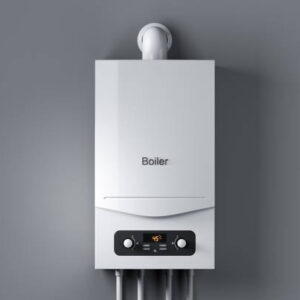Because bones can be found in a wide variety of configurations, sizes, and compositions, orthopaedic surgeons make use of a wide variety of surgical retractors in their procedures. The main purpose of these retractors is to make the surgical area easier to see and get to.
In orthopaedic surgery, retractors are utilized in the process of elevating bones, providing traction, and assisting in the placement of orthopaedic fixtures.
In this article, we’ll talk about retractors, which are used in knee replacement, hip replacement, and spinal surgery, among other orthopaedic surgeries. Each retractor has a few advantages and a few disadvantages.
Gelpi retractor
The Gelpi retractor has a ring-like handle, and the rings loop around the user’s fingers to provide leverage. This retractor is self-retaining. The Gelpi is most commonly utilized in procedures involving the spine. The working end is curved in the shape of an S, with the two ends pointing in opposite directions from one another.
This retractor comes in a few different varieties, each of which can be utilized for a different function. There is a small, a medium, and a large option. When working with fragile tissue or in situations where a larger tool would be too invasive, little ones are often the ones that are used. The medium-sized ones are convenient for everyday use as well as for situations in which you want greater command over the depth of the incision. When it comes to heavy-duty tasks, the huge Gelpi retractor is your best bet, and it comes in especially handy during abdominal surgery. The field of orthopaedic surgery requires a diverse selection of surgical instruments.
One interesting type of Gelpi has a deep angle, which makes it easier to reach deeper tissues and pull them back. Another variant, the Gelpi Odd Leg, is intentionally asymmetrical in its construction. The asymmetry is designed to facilitate spinal procedures in particular. Since asymmetry is better able to adapt to the natural curvature of the spine, it makes it possible for spinal surgery to be done from one side.
The inability of the Gelpi retractor to be manoeuvred freely is one of its many drawbacks. Because the Gelpi retractor is self-retaining, it was developed specifically for spinal surgery, and once it is locked into position, it is supposed to be stable. This lowers the likelihood that any of the neighboring structures will be damaged.
On the other hand, because so many modifications need to be made to the lighting during spinal procedures, the total amount of time spent operating is increased. Every time the surgeon moves to a new section of the operating field, the retractor will need to be withdrawn and repositioned.
Retractor designed by Hohmann
In most cases, the Hohmann retractor is utilized for procedures involving the hip or the knee. As opposed to a retractor with two blades like the Gelpi, this one only has one.
This tissue retractor can retract tissue along the edge of the joint, which is one of its features. It is helpful in the process of hip arthroplasty for retracting tissue at the posterior acetabular brim. In knee surgery, it is utilized to offer appropriate vision by being moved around the joint’s boundaries while it is being operated on.
This retractor has a fine tip that enables positive engagement, while the contoured blades prevent tissue damage. The structure of this retractor is comprised of a fine tip. The firm hold that is provided by this retractor can also be of assistance when manipulating bones.
The Hohmann retractor, much like the Gelpi, has the propensity to allow in an insufficient amount of light, which hinders visualization. According to the results of one study, hip arthroplasty may need more tools. This, in turn, may require the use of fiber optic light cables to guarantee sufficient vision. These cables have their unique risks in the operating room, particularly those related to heat and blockages.
An appealing and more up-to-date alternative is retractable spotlights, which provide their light source. They might help get around the problems that come with the Hohmann retractor. For instance, the light for our handheld toplight retractor comes directly from the instrument itself, so there is no need for any cords. It has a light source at the neck as well as on the blade, and it is composed of a plastic synthetic substance. The working end can be taken off and replaced with different retractor blades of different sizes and shapes, depending on what the surgeon needs.
Cobra retractor
Peaksurgicals the portable device The Cobra Retractor consists of a long handle and a working end that is terminated at an acute angle. The working end has a form that resembles a cobra’s head to some extent. This, in addition to the handle’s curvature, is the reason why it is called a cobra.
The base and the end of the head are both pointed, but the center of the head is rounded. The spinal roots can be retracted and elevated with the help of this retractor, which is often employed in spinal surgery. Also, it is utilized in complete hip replacement surgery as well as knee surgery, more specifically to elevate the acetabulum as well as the femur.
The fact that the operator needs to exert force to use the cobra retractor is one of its drawbacks. This is especially important to keep in mind while operating on obese patients’ hips or knees. Due to the sharp angle at the operating end of the instrument, retraction may take more effort when there is a lot of fatty tissue. When weariness caused by retractor use is a significant issue, a little bit of additional lighting and some instruments that are lighter in weight can be a tremendous assistance.
The KoplightTMsurgical light retractor is a compact device that is easy to maneuver and gives much-needed light to the operating field. It is designed specifically for use in orthopedic procedures.






